Colloquia for Fall 2021
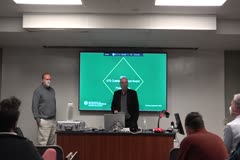
“From the Tropics to the Poles: How an ATS PhD Research Topic Links These Two Seemingly Diverse Environments”
December 09, 2021
Tristan L'Ecuyer
Hosted by Jeff Collett
It is a wonderful surprise and a great honor to be recognized with the CSU ATS Outstanding Alum Award. This occasion allowed me to pause and fondly remember my days as a graduate student in ATS and reflect on how my career has evolved to this point. Rather trying to share that whole story, however, my presentation focuses on a new satellite mission designed to address a startling gap in polar…
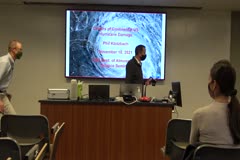
“Drivers of Continental US Hurricane Damage”
November 18, 2021
Phil Klotzbach
Hosted by Michael Bell
This presentation will examine the drivers of continental US (hereafter US) hurricane damage on a variety of timescales. For nearly 50 years, the Saffir-Simpson Scale has used maximum sustained wind to categorize hurricanes. Here I will show that minimum sea level pressure has a stronger correlation with US damage than maximum sustained wind. Minimum sea level pressure has the added…
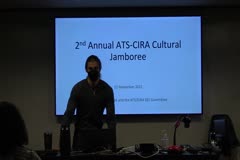
Cultural Jamboree
November 11, 2021
Multiple Presenters
Hosted by Department
“Cultural Jamboree” Five student presenters from our department will share their personal experiences of cultural interactions through their academic and social journeys. Talks will be followed by an open panel discussion. "Individualism vs. Collectivism" Chen-Kuang (Kevin) Yang "Motivation for International Exploration" James Larson "The "its complicated" relationship…
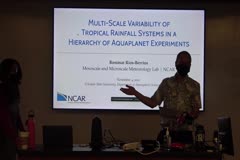
“Multi-Scale Variability of Tropical Rainfall Systems in a Hierarchy of Aquaplanet Experiments”
November 04, 2021
Rosimar Rios-Berrios
Hosted by Michael Bell
Tropical rainfall systems are important components of Earth’s climate system—from being key players in redistributing heat and moisture from the tropics to the high latitudes to manifesting into powerful high-impact phenomena (e.g., hurricanes) that can impact millions of lives around the world every year. Despite being so important, climate and weather prediction models struggle to…
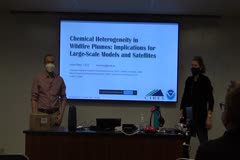
“Chemical Heterogeneity in Wildfire Plumes: Implications for Large-scale Air Quality Models and Satellite Retrievals”
October 28, 2021
Siyuan Wang
Hosted by Emily Fischer
Wildfires affect weather and climate, with major impacts on air quality and human health. With the record high heat and extreme drought conditions in the western United States, the future outlook for wildfires is grim. Despite decades of research, wildfires are still challenging to represent in modern air quality forecast models. One fundamental reason is that the spatial resolution at which…
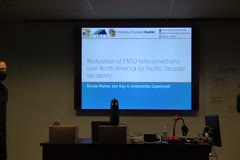
"Modulation of ENSO Teleconnections over North America by Pacific Decadal Variability"
October 21, 2021
Nicola Maher
Hosted by Maria Rugenstein
Both the El Niño Southern Oscillation (ENSO) and Pacific Decadal Variability (PDV) influence the climate over North America. For example, both El Niño events and the positive PDV are associated with anomalous cold and wet winter conditions in the south-west United States. Previous work has suggested that ENSO temperature and precipitation teleconnections differ depending on the phase of the…
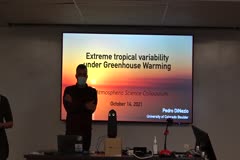
"Extreme tropical variability under greenhouse warming"
October 14, 2021
Pedro DiNezio
Hosted by Charlotte DeMott
Whether tropical climate variability will increase in response to greenhouse warming is highly uncertain. This question remains unanswered because externally-forced changes in modes of tropical variability cannot be ascertained using historical records or model predictions. We overcame these issues by studying changes in modes of variability under a range of past external forcings, validating…
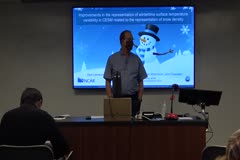
"Improvements in wintertime surface temperature variability in the Community Earth System Model version 2 (CESM2) related to the representation of snow density"
October 07, 2021
Isla Simpson
Hosted by Jim Hurrell
The Community Earth System Model (CESM) is widely used for the prediction and understanding of climate variability and change. Accurate simulation of the behavior of near surface air temperature (T2m) is critical in such a model for addressing societally relevant problems. However, previous versions of CESM suffered from an overestimation of wintertime T2m variability in Northern Hemisphere…
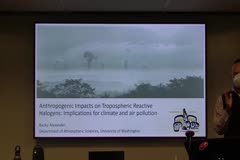
Anthropogenic impacts on tropospheric reactive halogens: Implications for climate and air pollution
September 30, 2021
Becky Alexander
Hosted by Jeff Pierce
The impacts of halogen chemistry on stratospheric ozone have been reasonably well-understood for decades, but our understanding of halogen chemistry in the troposphere is still in its infancy. Observations and models show that reactive halogens reduce the oxidation capacity of the atmosphere via reductions in ozone and the hydroxyl radical, with implications for radiative forcing of ozone and…
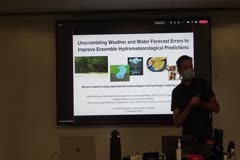
"Unscrambling Weather and Water Forecast Errors to Improve Ensemble Hydrometeorological Predictions"
September 23, 2021
Kelly Mahoney
Hosted by Russ Schumacher
As extreme flooding events and the associated cascade of societal flood risks and damages continue to inundate our newsfeeds, we as a scientific community are called to re-examine opportunities for improvement in flood prediction, risk communication, and societal preparedness. To achieve measurable improvement in forecasting the impact of water on the ground, one place to start is with a…
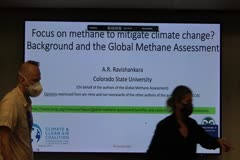
"Why Focus on Methane to Mitigate Climate Change? Background and the Global Methane Assessment "
September 16, 2021
A.R. Ravishankara (On behalf of the authors of the Global Methane Assessment)
Hosted by Emily Fischer
Methane, the simplest hydrocarbon, is a significant focus of current measures to keep the global mean temperature from exceeding 2oC by 2100. Why do we focus on methane, which is after all not the primary greenhouse gas? (It is the second most important greenhouse gas now, next to CO2, but is a crucial short-lived climate pollutant). I will discuss some “methane science.” The talk will…
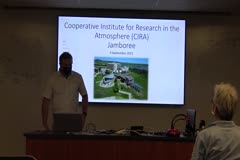
CIRA Jamboree
September 09, 2021
CIRA
Hosted by Steve Miller
This CIRA Jamboree seminar is an opportunity for CIRA scientists to introduce CSU/Atmos students to different CIRA research areas.
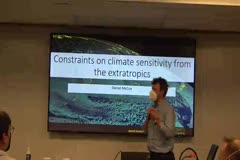
Constraints on Climate Sensitivity from the Extratropics
August 26, 2021
Daniel McCoy
Hosted by Maria Rugenstein
The extratropics (roughly 40°-poleward) are the cloudiest region on Earth. The atmospheric regime in these regions varies rapidly on a scale of hours to days. In contrast to the subtropics, the cloud feedback predicted in this region by GCMs tend to be negative. However, the most recent model intercomparison contributing to AR6 has displayed a shift towards more positive feedbacks, leading in…
